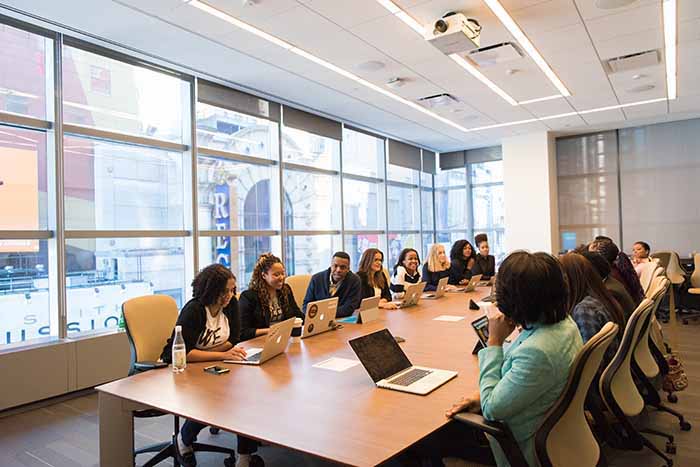Study shows what factors lead to 'resilient collaboration' in community improvement efforts

LAWRENCE — Every day, people come together to address challenges facing their communities, such as homelessness, economic development or environmental protection that are not quickly or easily solved. While all are well-intentioned, and collaborations share goals of community betterment, some are more successful than others.
A University of Kansas researcher has published a new study that details what keeps community partnerships strong over time.
Heather Getha-Taylor, associate professor of public affairs and administration at KU, studied voluntary collaborations from 14 states across the US. She interviewed collaborators to learn what led to successful efforts and what challenges were detrimental to lasting endeavors. “Partnerships that Last: Identifying the Keys to Resilient Collaboration,” a research element published by Cambridge University Press, details the keys to collaborative resilience.
Working together to solve shared priorities can bring out the best in community members, even though the work is not easy and often cannot be completed quickly. While such efforts have succeeded and failed to varying degrees, little research has addressed what successful collaborations have in common. Getha-Taylor conducted interviews with 35 individuals from 19 collaboratives included in the Foundation Center’s Collaboration Hub database. She found successful efforts had a number of factors in common.
“Collaborative resilience is a product of such features as social capital, community, buy-in, leadership, structure and resource diversity,” Getha-Taylor said. “Collaborative inertia, by contrast, can result from stress, internal changes, resource issues or natural decline over time.”
Resilient partnerships were found to have “narrative polyphony,” or agreement on the collaborative’s critical moments, as expressed by multiple partners. This finding may be linked to the partners’ broader agreement on mission as well as goals and values that sustain these experiences over time. That finding is especially notable, as collaboratives are frequently formed by mission, or shared goal, rather than mandate from governments or other officials.
The good news for partnerships that ended was that they seldom saw any sort of permanent failure or went away for good.
“Relationships that ‘died,’ never really die,” Getha Taylor said. “Even for collaboratives that ended, a ‘phoenix effect’ was observed in the sample. Long-term collaboratives have a tendency to rise again in new ways and emerge from an end that is rarely permanent.”
Lack of resources, financial and otherwise, were proven to be a common factor in collaborations that were not as successful. Stress, turnover, failure to agree on mission or goals were detrimental as well, but a lack of resources was an especially difficult hurdle to overcome.
“Resources matter," Getha-Taylor said. "We don’t want to say that money is everything. Passion and love for the work are important, but without resources, it is very hard for community collaboratives to continue their work.”
The study helps fill a gap in scholarly literature about features of successful collaboratives, but perhaps just as importantly, it can be beneficial to practitioners and people working to make a difference in their communities as well. Understanding collaborative resilience and the factors that make it possible can allow community partners to work together over time, serve as an example for others and to learn for their own futures.
“Keeping collaborations strong over time is critical for addressing boundary-spanning problems that are not easily or quickly solved by any one individual, organization or sector. It is my hope that the lessons learned from this study will assist those who are working to address pressing needs in their own communities.”
Image credit: Pexels.com